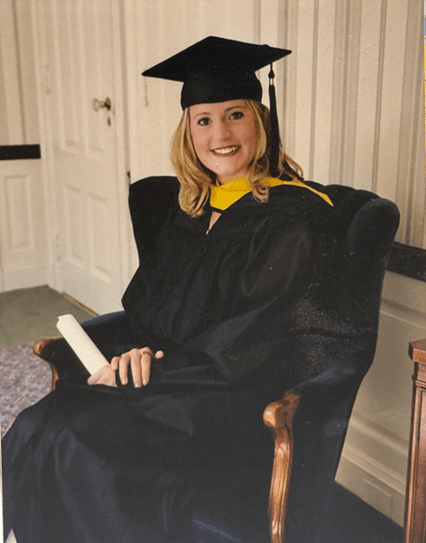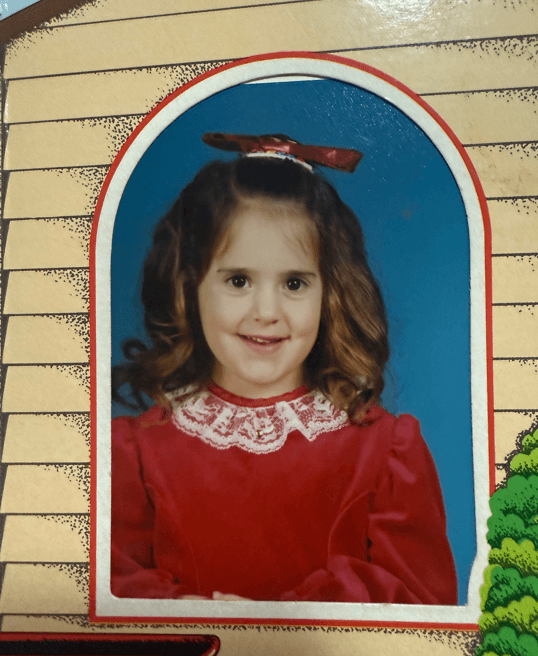
MAAPS Celebrating 50 Years of IDEA Blog Series
From Trapper Keeper Shield to Triumph
Reflection submitted by Lissa Picard, Educational Administrator at The Center School (Positive Regard Network), Chicopee, MA
“In the back row of my elementary school classroom, I became a master of disguise. With trembling hands and a heart that pounded like a drum, I carefully positioned my Lisa Frank Trapper Keeper—its neon unicorns and rainbows not just decoration, but a shield. Behind it, I hid my shame, confusion, and the worksheets I didn’t understand. I was a student with significant reading disabilities and dysgraphia, struggling silently in a world built for fluent readers and fast writers.
While others read aloud effortlessly, I counted the students ahead of me in a desperate attempt to prepare for my turn, hoping to decode just one sentence in advance. My notebooks were filled with messy scrawls and abandoned words, my thoughts trapped in a body that couldn’t get them out in the “right” way. I often felt broken—smart enough to know what I wanted to say but locked out of the tools I needed to say it. It’s a feeling that’s likely familiar to the thousands of students across the Commonwealth who experience language-based learning differences.
I didn’t know it by name back then, but I first felt the presence of the Individuals with Disabilities Education Act (IDEA) on the day when someone finally told me, “You’re not lazy, you just learn differently.” IDEA gave me more than accommodations—it gave me access. I received specialized instruction, assistive technology, extended time, and—perhaps most importantly—teachers who saw me not as a problem to fix, but as a student to empower.
With the support IDEA mandated – access for every child to a free and appropriate public education – I stopped hiding. I began to step out from behind that Trapper Keeper and into classrooms where I felt seen. By high school, I wasn’t just surviving, I was thriving. I enrolled in AP classes. I found my voice through audiobooks, digital spell checkers, and computers, and educators who embraced universal design for learning. I discovered that my learning differences didn’t mean I couldn’t achieve; they simply meant I had to take a different path to get there. I pursued two master’s degrees in education, fueled by a deep commitment to ensure other students do not feel the same painful invisibility I once did.
Today, I serve as an educational administrator and special education leader in Massachusetts, working with some of the most vulnerable students in our state. Many of them carry their own Trapper Keepers – literal or figurative – to guard their fears and struggles. And every day, I work to be the person I needed when I was their age: someone who understands, who advocates, and who never gives up.
IDEA didn’t just give me a chance—it gave me purpose. It turned my greatest obstacle into the driving force of my career. It took a little girl who felt broken and turned her into a fierce advocate for others like her.
Because of IDEA, I no longer hide behind my Trapper Keeper. I lead with it.”

This year, IDEA turns 50—a half-century of opening doors for students with disabilities, students like Lissa. It is a milestone worthy of celebration, but even more, it’s a call to action.
For more than 7 million children across the U.S., IDEA is not just a law—it’s a lifeline. But that lifeline is fraying. In 50 years, Congress has never fully funded IDEA. Federal support remains at about 10%, leaving schools to shoulder the weight of unmet promises and students vulnerable. In Massachusetts and beyond, the number of students requiring special education is rising and so is the complexity of their needs.
As we celebrate IDEA’s 50th anniversary, let’s do more than look back—let’s look forward. Let’s honor the educators, families, and students who have fought for access by demanding full funding and unwavering commitment to this law’s future. Because every child deserves what IDEA gave Lissa: the chance to be seen, supported, and free to lead.
